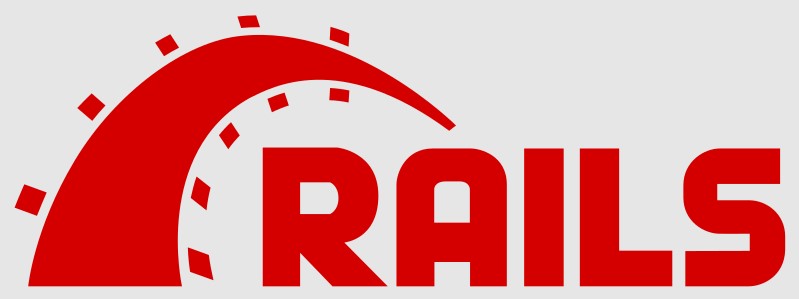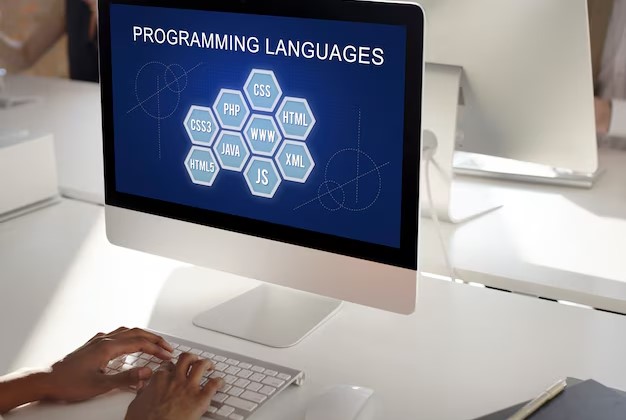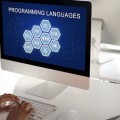Most Popular Programming Languages in 2024
— November 24, 2024Introduction
The landscape of programming and scripting languages is vast, with numerous technologies used for a wide array of applications, from building websites to powering complex applications. Every year, developers around the world share their experiences and preferences through surveys, and some technologies consistently stand out as the most popular. Understanding the trends in programming languages is essential for developers who aim to stay relevant and effective in their work. This article will explore the most popular technologies, focusing on the most commonly used programming, scripting, and markup languages.
This guide is inspired by insights from a Stack Overflow survey. Let’s explore the details of some of the most popular programming languages.
JavaScript
JavaScript has long been a dominant force in the world of web development. Since the first developer survey was conducted, JavaScript has consistently ranked as the most popular programming language, with the exception of 2013 and 2014 when SQL briefly surpassed it. JavaScript’s popularity can be attributed to its central role in building interactive websites and web applications. Its ability to run both on the client-side (in the browser) and server-side (using technologies like Node.js) has made it indispensable for modern development. Today, over 62% of developers use JavaScript, making it the most widely used programming language in the world.
JavaScript’s versatility extends to various frameworks and libraries such as React, Angular, and Vue.js, which further drive its usage. These tools allow developers to build more dynamic, user-friendly applications with less effort. The large ecosystem of tools, packages, and resources available to JavaScript developers ensures that the language will remain at the forefront of development for years to come.
HTML/CSS
HTML and CSS are the foundational languages of the web. HTML (HyperText Markup Language) is used to structure content on the web, while CSS (Cascading Style Sheets) is responsible for the visual design and layout of web pages. Together, they are essential for building any website or web application. With 52.9% of developers using HTML and CSS, these technologies remain the most crucial skills for front-end development.
HTML provides the building blocks for web content, such as headings, paragraphs, images, and links. CSS, on the other hand, enables the styling of these elements, including fonts, colors, spacing, and positioning. While HTML and CSS are often learned together, mastering them is essential for any web developer looking to create aesthetically pleasing and functional websites.
Python
Python has gained significant popularity in recent years due to its simplicity and wide range of applications. With 51% of developers using Python, it ranks among the top languages in the programming community. Python’s clean syntax and readability make it an excellent choice for beginners and experienced developers alike. The language supports a variety of paradigms, including object-oriented, procedural, and functional programming.
Python’s versatility extends across many domains, from web development (using frameworks like Django and Flask) to data science, machine learning, artificial intelligence, and automation. Its extensive collection of libraries and frameworks, along with its large developer community, makes it a top choice for many professionals.
SQL
SQL (Structured Query Language) has been a staple in the world of databases for decades. It is used to manage and manipulate relational databases, making it an essential tool for back-end developers. SQL’s dominance in the developer survey for 2013 and 2014 reflects its importance in the management of large-scale data. Today, 51% of developers use SQL, and it remains a crucial skill for anyone working with databases.
SQL is used to perform a wide range of operations, such as querying, updating, and deleting data. Its ability to interact with various database management systems (DBMS) like MySQL, PostgreSQL, and Microsoft SQL Server ensures its continued relevance. As data continues to play a vital role in the development of modern applications, SQL remains an indispensable tool for developers.
TypeScript
TypeScript is a superset of JavaScript that adds optional static typing and other features to the language. With 38.5% of developers using TypeScript, it has quickly become one of the most popular technologies in the development community. TypeScript offers many advantages over JavaScript, including better tooling, enhanced error checking, and improved code maintainability.
Developers often choose TypeScript when building large-scale applications because it helps identify errors during development rather than at runtime. TypeScript also integrates seamlessly with JavaScript frameworks and libraries, making it an appealing choice for developers looking to improve their code quality without sacrificing the flexibility of JavaScript.
Bash/Shell
Bash and other shell scripting languages play an essential role in system administration, automation, and software development. With 33.9% of developers using Bash/Shell, these scripting languages are an integral part of the software development process. Bash is widely used for automating repetitive tasks, managing server configurations, and running scripts in Unix-like operating systems such as Linux and macOS.
Bash scripts can be used for a variety of purposes, including file management, process control, and network communication. The simplicity and power of Bash make it a valuable tool for developers who need to streamline their workflows and automate tasks.
Java
Java is a programming language that has stood the test of time. Despite the rise of newer languages, Java continues to be used by 30.3% of developers. It is known for its platform independence, as Java applications can run on any system with a Java Virtual Machine (JVM). Java’s robust features, including strong object-oriented programming principles and a large standard library, make it a popular choice for building large-scale enterprise applications.
Java is widely used in industries such as finance, healthcare, and telecommunications, where reliability, scalability, and security are paramount. Popular frameworks like Spring and Hibernate have further cemented Java’s position as one of the most used programming languages.
C#
C# is a language developed by Microsoft that runs on the .NET framework. It is used by 27.1% of developers and is a popular choice for developing desktop applications, games, and web services. C# combines the simplicity of high-level languages with the power of low-level programming, making it a versatile tool for a wide range of applications.
C# is commonly used in game development with the Unity engine, as well as for developing enterprise applications using the .NET framework. Its strong typing, garbage collection, and modern syntax make it a popular choice for developers working in the Microsoft ecosystem.
C++
C++ is a powerful, high-performance language used for systems programming, game development, and applications that require efficient memory management. It is used by 23% of developers and remains one of the most important languages in the development community. C++’s ability to interact directly with hardware and its support for low-level programming make it a preferred choice for performance-critical applications.
Despite its steeper learning curve, C++ offers fine-grained control over system resources, making it ideal for developing software that requires speed and efficiency, such as operating systems, embedded systems, and high-performance games.
C
C is one of the oldest and most influential programming languages. It is widely used in system programming, embedded systems, and low-level applications. With 20.3% of developers using C, it remains a foundational language in the software development landscape. C is known for its simplicity and efficiency, making it a popular choice for developing operating systems and other system-level software.
The language’s direct access to hardware and memory, as well as its minimal runtime overhead, make it an essential tool for developers working with resource-constrained environments. C has also influenced many other languages, including C++, Java, and Python.
PHP
PHP is a server-side scripting language used primarily for web development. It powers many popular websites and content management systems (CMS) such as WordPress, making it an essential tool for back-end developers. With 18.2% of developers using PHP, it remains a widely used language for building dynamic websites and web applications.
PHP is particularly well-suited for building websites that interact with databases, such as e-commerce platforms and blogs. Despite the rise of newer technologies, PHP’s simplicity and extensive ecosystem ensure that it remains a relevant and powerful tool in the development community.
PowerShell
PowerShell is a command-line shell and scripting language developed by Microsoft. It is used primarily for automating administrative tasks and managing configurations on Windows-based systems. With 13.8% of developers using PowerShell, it has become an essential tool for IT professionals and system administrators.
PowerShell allows users to automate repetitive tasks, manage system resources, and perform complex operations using simple scripts. Its integration with the .NET framework and its object-oriented nature make it a powerful and flexible tool for managing Windows environments.
Go
Go, also known as Golang, is a statically typed programming language developed by Google. With 13.5% of developers using Go, it has become increasingly popular for building scalable, high-performance applications. Go is known for its simplicity, fast compilation times, and strong concurrency support, making it an ideal choice for developing cloud services, microservices, and distributed systems.
Go’s efficient garbage collection, strong typing, and built-in support for concurrency make it an attractive option for developers working on modern software architectures. Its growing ecosystem of libraries and frameworks continues to drive its adoption in the developer community.
Rust
Rust is a systems programming language focused on safety, performance, and concurrency. With 12.6% of developers using Rust, it has gained a reputation for its ability to prevent memory-related bugs and offer excellent performance. Rust’s ownership model, which ensures memory safety without a garbage collector, has made it a popular choice for building secure, high-performance applications.
Rust is commonly used for building system-level software, game engines, and applications where performance and safety are critical. Its strong type system and memory safety features have made it a favorite among developers who prioritize security and performance.
Kotlin
Kotlin is a modern, statically typed programming language developed by JetBrains. It has become increasingly popular, particularly for Android development, and is used by 9.4% of developers. Kotlin is fully interoperable with Java
, which makes it a great choice for developers working in the Java ecosystem.
Kotlin’s concise syntax, improved null safety, and modern features make it a preferred language for Android developers. It is also gaining traction in other domains, such as server-side development and web development, thanks to its versatility and ease of use.
Lua
Lua stands at 6.2% popularity in the programming community. Known for its simplicity and small footprint, Lua is often used in embedded systems, game development, and scripting. It is a lightweight language designed to be easily integrated into other applications, which makes it ideal for use in games and other real-time systems. Lua’s ease of integration with C and C++ makes it a popular choice for game engines and high-performance applications.
Dart
Dart, with a popularity of 6%, is a language primarily used for building mobile, web, and server applications. Dart is the language behind Flutter, Google’s UI toolkit, which allows developers to create natively compiled applications for mobile, web, and desktop from a single codebase. Dart’s syntax is similar to other C-style languages, making it easier for developers with experience in Java or JavaScript to transition into Dart programming.
Assembly
Assembly language, at 5.4%, is a low-level language that is closely tied to the hardware architecture. It provides developers with direct access to a system’s hardware resources, making it valuable for tasks where performance optimization is critical. Assembly is still used in embedded systems, device drivers, and situations where precise control over hardware is necessary. Despite being challenging to work with compared to higher-level languages, its ability to produce highly optimized code keeps it relevant in certain industries.
Ruby
Ruby holds a 5.2% share in the programming language space. Ruby is known for its simplicity and readability, which makes it a popular choice for beginners. It is often associated with web development due to the Ruby on Rails framework, which facilitates the creation of dynamic, data-driven websites. Ruby’s focus on developer happiness and productivity has made it a favored language for startups and rapid application development.
Swift
With a 4.7% share, Swift is Apple’s programming language for iOS, macOS, watchOS, and tvOS applications. Introduced as a modern alternative to Objective-C, Swift is designed to be safe, fast, and expressive. It is optimized for performance and memory usage, making it suitable for mobile and desktop applications on Apple’s platforms. Swift’s growing popularity is driven by its increasing use in building applications for Apple’s ecosystem and its friendly syntax, which helps developers build robust applications quickly.
R
R is a statistical programming language that holds 4.3% of the programming market. It is widely used in data analysis, statistical computing, and machine learning. R’s strength lies in its extensive library of statistical functions and packages, which makes it a go-to language for researchers and data scientists. The language’s capability to handle complex data structures and perform statistical modeling makes it indispensable in fields like data analytics, finance, and academic research.
Visual Basic
At 4.2%, Visual Basic remains relevant in certain sectors, especially in desktop application development. Originally developed by Microsoft, Visual Basic has been used for creating Windows applications, with a focus on ease of use. Its graphical interface and simple syntax have made it an approachable language for beginners. While its popularity has waned in favor of newer languages, Visual Basic continues to find use in legacy systems and for small-scale business applications.
MATLAB
MATLAB, with 4%, is a programming language primarily used for numerical computing and algorithm development. It is widely used in academic research, engineering, and industries such as aerospace, automotive, and electronics. MATLAB’s strong suit is its ability to perform matrix computations and numerical analysis efficiently. It also includes a variety of built-in functions for plotting and visualization, making it a favorite among scientists and engineers for simulation and data analysis tasks.
VBA
Visual Basic for Applications (VBA) holds 3.7% of the programming space. VBA is primarily used for automating tasks in Microsoft Office applications, such as Excel, Word, and Access. It allows users to write macros to automate repetitive tasks and is particularly popular among business analysts, accountants, and other professionals who rely heavily on Microsoft Office. Despite its niche focus, VBA remains an important tool for automation in the business world.
Groovy
Groovy, with a 3.3% share, is a dynamic language for the Java platform. It is often used for scripting, testing, and building web applications. Groovy’s syntax is similar to Java but with fewer constraints, making it a more flexible and expressive language. It is commonly used in conjunction with frameworks like Grails and in environments where rapid prototyping and development are needed. Groovy’s integration with Java also makes it an attractive choice for developers already familiar with the Java ecosystem.
Scala
Scala, at 2.6%, is a functional and object-oriented language that runs on the Java Virtual Machine (JVM). It combines the best features of both paradigms, offering a concise syntax and powerful abstraction capabilities. Scala is often used in big data processing and distributed systems, thanks to frameworks like Apache Spark. Its compatibility with Java and its ability to scale for large applications make it popular in enterprise-level solutions.
Perl
Perl, with a 2.5% share, is a high-level, general-purpose programming language that is known for its text processing capabilities. Perl is often used in web development, system administration, and network programming. It has a reputation for being particularly useful in situations where regular expressions and string manipulation are important. Although Perl’s popularity has declined over the years, it is still a valuable tool for certain tasks in systems programming and data manipulation.
GDScript
GDScript, holding 2.3%, is a high-level scripting language used in the Godot game engine. It is designed to be easy to learn and closely integrated with Godot’s game development environment. GDScript is optimized for performance within the Godot engine, and its syntax is similar to Python, making it accessible to developers with a background in Python. As game development grows, GDScript has gained popularity among indie game developers for creating 2D and 3D games.
Objective-C
Objective-C, with 2.1%, was the main programming language used for developing applications for Apple’s platforms before Swift’s introduction. Despite being gradually replaced by Swift, Objective-C still plays a role in maintaining legacy applications. It is a superset of the C programming language, adding object-oriented features, and it was the foundation for Apple’s software ecosystem before Swift took over.
Elixir
Elixir, also holding 2.1%, is a functional language built on the Erlang VM, which is known for its ability to handle large-scale, concurrent systems. Elixir is often used in web development, particularly in applications that require high availability, scalability, and low latency. The Phoenix framework, built with Elixir, is widely used for building real-time applications, including messaging apps and financial platforms.
Haskell
Haskell, with 2%, is a pure functional programming language that is known for its strong type system and lazy evaluation. Haskell’s emphasis on immutability and mathematical purity makes it particularly suited for tasks involving complex data manipulation and algorithms. Although it is not as widely used as some other languages, Haskell’s unique approach to programming has made it a popular choice for academic research and projects that require precise and reliable code.
Delphi
Delphi, holding 1.8%, is an object-oriented programming language primarily used for desktop application development. It is particularly popular in embedded systems and industries where cross-platform applications are needed. Delphi’s rapid application development (RAD) environment allows developers to quickly design and deploy applications. Although its popularity has declined with the rise of other technologies, Delphi remains a reliable tool for developers working on legacy systems and specialized applications.
MicroPython
MicroPython, with 1.6%, is a lean and efficient implementation of Python that is designed to run on microcontrollers. It allows developers to write Python code for embedded systems and Internet of Things (IoT) devices. MicroPython is gaining traction in the maker community for its simplicity and the ability to quickly prototype hardware projects. Its growing use in educational settings also contributes to its increasing popularity.
Lisp
Lisp, at 1.5%, is one of the oldest programming languages still in use today. It is known for its unique syntax, which is based on symbolic expressions, and its focus on recursive programming. Lisp has influenced many modern languages and continues to be used in artificial intelligence, computer science research, and academic settings. Despite its niche status, Lisp’s flexibility and powerful capabilities make it a valuable tool for certain kinds of problems.
Clojure
Clojure, with 1.2%, is a modern functional programming language that runs on the Java Virtual Machine. Clojure emphasizes immutability and concurrency, making it well-suited for building highly scalable and reliable systems. It is used in areas such as web development, data analysis, and distributed computing, and its integration with Java libraries makes it a compelling choice for JVM developers.
Julia
Julia, at 1.1%, is a high-level programming language designed for numerical and scientific computing. Julia is known for its speed, which is comparable to low-level languages like C, and its ease of use for complex mathematical computations. It is widely used in fields like data science, machine learning, and scientific research, offering an efficient alternative to languages like Python and MATLAB in performance-critical applications.
Zig
Zig, also with 1.1%, is a relatively new programming language that emphasizes simplicity and performance. It is designed as a safer and more efficient alternative to C and C++, offering better memory safety without sacrificing performance. Zig’s growing popularity is driven by its use in systems programming, where fine control over hardware and performance is critical.
Fortran
Fortran, holding 1.1%, is a high-performance language primarily used for scientific and engineering applications. It is particularly popular in fields like climate modeling, physics simulations, and numerical computations. Although Fortran’s usage has declined in favor of more modern languages, its ability to handle complex mathematical operations continues to make it indispensable in certain domains.
Solidity
Solidity, with 1.1%, is a programming language used for developing smart contracts on blockchain platforms like Ethereum. It allows developers to create decentralized applications (dApps) and execute transactions securely on the blockchain. Solidity’s relevance continues to grow as the blockchain and cryptocurrency industries expand.
Ada
Ada, at 0.9%, is a programming language designed for real-time, embedded, and safety-critical systems. It is known for its strong typing, which helps catch errors at compile time, making it suitable for applications in aerospace, defense, and automotive industries. Ada’s emphasis on reliability and maintainability makes it a preferred choice for mission-critical systems.
Erlang
Erlang, also with 0.9%, is a functional programming language designed for building highly concurrent, distributed systems. It is used in telecommunications, banking, and other industries that require systems to be highly available and resilient to failures. Erlang’s ability to handle numerous simultaneous tasks makes it ideal for applications like messaging platforms and real-time services.
F#
F#, with 0.9%, is a functional-first language that runs on the .NET framework. It is often used for data analysis, machine learning, and web development. F# combines functional, object-oriented, and imperative programming styles, offering a flexible approach to problem-solving. Its integration with the .NET ecosystem makes it a popular choice for developers already working with Microsoft technologies.
Apex
Apex, with 0.8%, is a proprietary programming language developed by Salesforce for building applications on its platform. Apex is used to write business logic for Salesforce applications, including triggers, workflows, and custom logic. Its integration with Salesforce’s cloud ecosystem makes it a valuable tool for organizations using Salesforce to manage customer relationships.
Prolog
Prolog, holding 0.8%, is a declarative programming language used in artificial intelligence and computational linguistics. It is particularly suited for tasks that involve logical reasoning, such as expert systems, natural language processing, and theorem proving. Prolog’s approach to problem-solving is different from imperative programming, as it focuses on defining relationships and rules.
OCaml
OCaml, with 0.8%, is a functional programming language known for its efficiency and expressiveness. It combines functional, imperative, and object-oriented programming paradigms, making it versatile for a wide range of applications. OCaml is used in fields like finance, web development, and scientific computing, where high performance and reliability are required.
Cobol
Cobol, at 0.7%, is an older language that is still widely used in legacy systems, particularly in banking and government applications. Although its usage has declined, Cobol’s ability to handle large-scale transaction processing ensures that it remains critical in certain sectors. Many large institutions still rely on Cobol for maintaining and upgrading their systems.
Crystal
Crystal, with 0.4%, is a statically typed, compiled language that is designed to be as fast as C and as easy to use as Ruby. Crystal’s primary focus is on providing high-performance applications with a developer-friendly syntax. Its growing popularity is driven by its ability to offer the benefits of both high performance and ease of use.
Nim
Nim, also with 0.4%, is a statically typed language designed for performance and expressiveness. Nim’s focus on low-level control and high performance makes it suitable for systems programming. It is gaining traction in fields like game development and web development, where performance is a critical factor.
Zephyr
Zephyr, at 0.3%, is an open-source real-time operating system (RTOS) designed for use in embedded systems. While not a general-purpose programming language, Zephyr’s role in supporting IoT and other embedded devices makes it a critical part of the development stack for those building real-time, resource-constrained systems. It is used in applications like robotics, automotive, and industrial systems.
An Overview Of Programming Languages Categorized By Their Primary Use Cases.
Web Development
Front-end:
HTML and CSS are the core building blocks for web pages. HTML structures the content, while CSS is used to style it, ensuring the page looks appealing. JavaScript enhances this further by enabling dynamic, interactive features. Frameworks and libraries like React, Angular, and Vue.js help streamline development by offering pre-built components and solutions. TypeScript, a superset of JavaScript, improves code quality by adding static typing, making it easier to maintain and scale projects.
Back-end:
Python is a popular choice for back-end development, thanks to its simplicity and powerful frameworks like Django and Flask. PHP is commonly used for server-side scripting and web applications, while Java is favored for enterprise-level solutions, with frameworks such as Spring and Hibernate. C# is a strong contender in web development, particularly within the .NET framework. Ruby is known for its ease of use, with Ruby on Rails being a prominent framework for rapid development. Go excels in creating scalable web applications and microservices, while Elixir, with its Phoenix framework, focuses on highly concurrent and scalable web apps. Scala, combining functional and object-oriented programming, is often used for web applications on the JVM. Groovy and Clojure, both dynamic and functional, are also used on the JVM for web development.
Mobile Development
Swift is the go-to language for Apple platforms, supporting iOS, macOS, watchOS, and tvOS. Kotlin is the modern language for Android development, offering improved features over Java. Dart is the language behind Flutter, enabling developers to build cross-platform mobile apps that work on both iOS and Android with a single codebase.
Game Development
C++ is a powerful language for high-performance game engines and applications, where speed is crucial. C# is popular for game development using Unity, a widely-used game engine. JavaScript allows developers to create web-based games using engines like Phaser and PixiJS. Lua, a lightweight scripting language, is commonly used in game engines for scripting, while GDScript is tailored specifically for the Godot game engine, enabling fast game development.
Data Science and Machine Learning
Python is the most widely used language in data science and machine learning, with a rich ecosystem of libraries like NumPy, Pandas, Scikit-learn, and TensorFlow. R is designed for statistical computing and is used heavily in data analysis. Julia focuses on high-performance numerical and scientific computing, making it ideal for complex algorithms. Scala is employed in big data processing, particularly with Apache Spark. MATLAB is used for numerical computing and algorithm development, often in research and academia.
System Programming and Embedded Systems
C remains a foundational language for system programming and embedded systems due to its low-level capabilities. C++ builds on this with additional features for performance-critical applications. Rust offers a modern approach to systems programming, focusing on safety and concurrency. Go is valued for its efficiency and scalability in system design. Assembly language allows direct manipulation of hardware, essential for low-level programming. Ada is designed for real-time and safety-critical systems, often used in aerospace and defense. Erlang is built for highly concurrent, fault-tolerant systems. MicroPython enables Python development on microcontrollers and embedded systems. Zephyr is a real-time operating system (RTOS) specifically designed for embedded devices.
Other Purposes
SQL is essential for managing relational databases, allowing for efficient data manipulation and retrieval. Bash and Shell are scripting languages that automate tasks and system administration, while PowerShell performs similar functions on Windows systems. Solidity is used for developing smart contracts on blockchain platforms, empowering decentralized applications. Lisp is known for symbolic expression syntax and is frequently used in artificial intelligence applications. Prolog focuses on logical programming, often applied in AI and computational linguistics. OCaml is a functional language renowned for expressiveness and efficiency. Cobol, though outdated, is still used in legacy systems, particularly in banking and finance. Fortran continues to be used in scientific and numerical computing for its performance in complex calculations.
How To Choose The Right Programming Language for Your Software Project
Choosing the appropriate programming language for a software project depends on several key factors. Each language has its strengths and is suited to different types of projects. Here’s a guide on how to select the right one:
Project Type and Domain
The first step is to understand the type of software you’re building. Different languages are better suited for certain applications:
Web Development: For front-end development, HTML, CSS, and JavaScript (or frameworks like React, Angular, Vue.js) are the standard. For back-end, consider Python (Django, Flask), PHP, or Java (Spring) depending on your project’s complexity and scalability requirements.
Mobile Development: If you’re developing apps for Apple devices, Swift is the go-to language. For Android, Kotlin is the most popular modern choice. Dart with Flutter is ideal for cross-platform apps.
Game Development: C++ is essential for high-performance games, while C# with Unity is a great choice for a more accessible entry into game development. JavaScript is used for web-based games.
Data Science and Machine Learning: Python dominates this space due to its rich ecosystem of libraries like TensorFlow, Pandas, and NumPy. R and Julia are alternatives depending on the level of performance and statistical needs.
Project Requirements
Performance Needs: If performance is a priority (such as in real-time applications or gaming), languages like C, C++, or Rust may be more suitable due to their lower-level nature.
Scalability: For applications that need to scale effectively, languages like Go, Java, or Python (with proper frameworks) are good options. Go, for example, is designed for scalable systems, while Java is known for enterprise-level solutions.
Concurrency: If your project involves many tasks running at the same time, consider Elixir, Go, or Erlang, as these languages excel in handling concurrent operations efficiently.
Team Expertise and Community Support
Consider the skill set of your development team. Some languages are easier to learn and have larger communities, making them more accessible for development. Python and JavaScript are widely used and have extensive resources, documentation, and communities. If your team is already experienced with a certain language, that might influence the decision.
Development Speed and Maintenance
Some languages promote rapid development due to their simplicity and the availability of powerful frameworks. For instance, Ruby with Ruby on Rails allows for quick prototyping, while Python’s readability and extensive libraries make it easy to maintain. If speed of development and long-term maintenance are important, consider these options.
Library and Framework Ecosystem
The availability of frameworks and libraries that fit your project needs can make or break your decision. For web development, frameworks like Django (Python), Laravel (PHP), or Spring (Java) can speed up development significantly. If you’re building a mobile app, Flutter (Dart) or React Native (JavaScript) are powerful choices for cross-platform development.
Cost and Resources
Some languages have a higher cost of development due to the need for specialized skills or tools. For instance, C++ development can require more expertise and time, whereas languages like JavaScript and Python have a larger pool of developers. If cost is a factor, consider how easily you can hire skilled developers in the language you choose.
Long-Term Viability
Choose a language that has good support for the future. While older languages like COBOL still exist in legacy systems, newer languages like Kotlin, Swift, and Rust offer modern features that ensure long-term maintainability and support.
Integration Needs
If your software needs to integrate with other systems (e.g., databases, APIs), make sure the language you choose has the necessary libraries or frameworks for smooth integration. SQL, for example, is essential for managing relational databases, and languages like Python and JavaScript have strong support for interacting with APIs.
Conclusion
The landscape of popular programming and scripting languages is constantly shifting as new technologies emerge and existing languages evolve. However, some languages have remained staples in the developer community due to their versatility, power, and widespread use. JavaScript, HTML/CSS, Python, SQL, TypeScript, and many others continue to shape the development world, each serving distinct purposes and catering to different needs.
By understanding the most popular technologies, developers can make informed decisions about which languages to learn and use in their projects. Whether focusing on web development, data science, systems programming, or automation, the right language can significantly impact a developer’s efficiency and success in the ever-changing tech landscape.
For business, to choose the right programming language, just clearly define the type of project you’re working on, assess the required performance, scalability, and concurrency, consider the expertise of your team, and evaluate the frameworks and libraries available. A language like Python might be perfect for a data-heavy project, while C++ would be better for performance-critical applications like games. Ultimately, the choice should align with the project’s technical needs, the team’s skills, and long-term support considerations.
About author
S3Corp. is a leading software development outsourcing service based in Ho Chi Minh, Vietnam. We are always the pioneers and always proud to provide the best outsourcing services and solutions, to promote efficiency and bring the most practical value for customers










